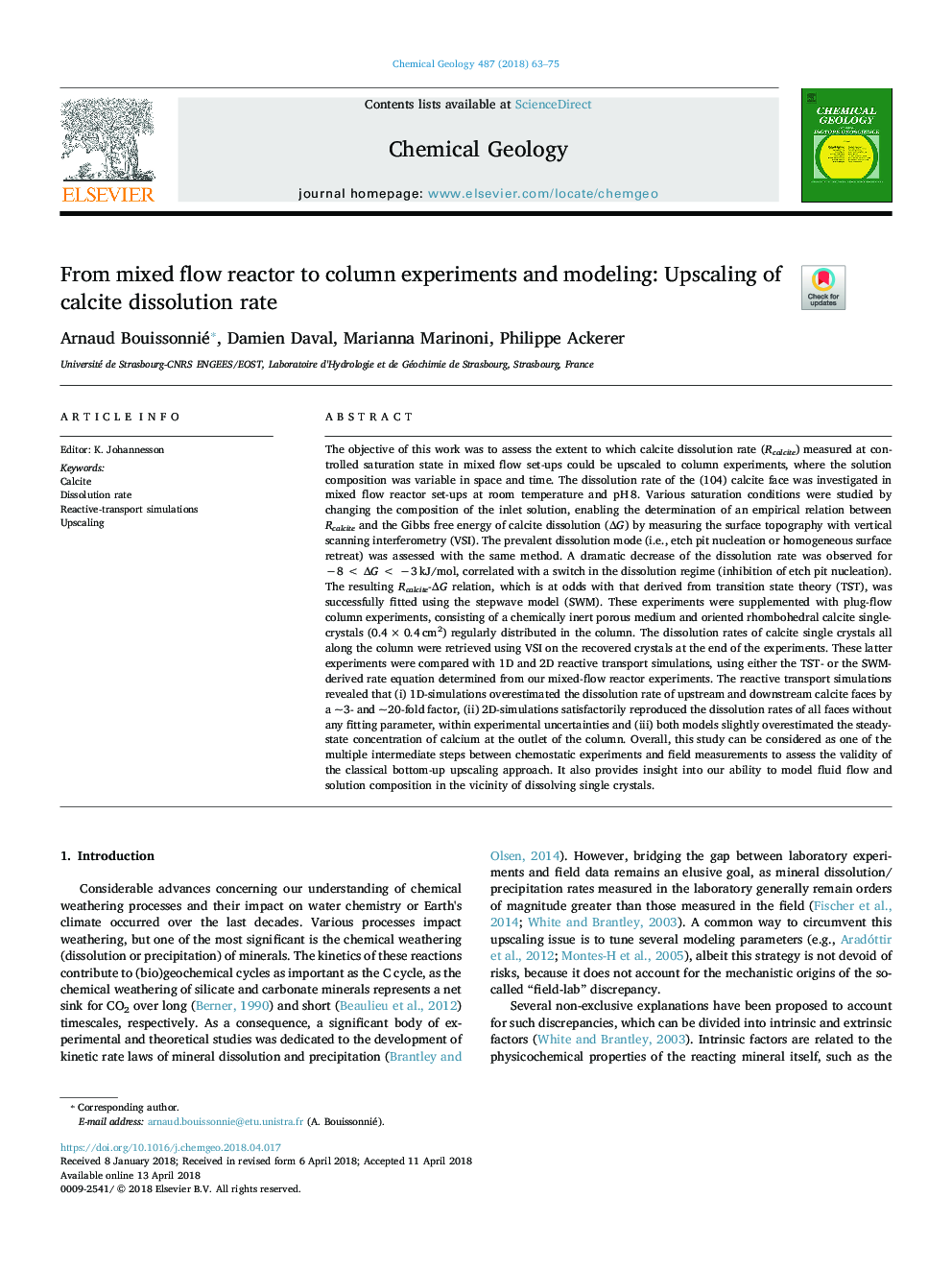| Article ID | Journal | Published Year | Pages | File Type |
|---|---|---|---|---|
| 8910224 | Chemical Geology | 2018 | 13 Pages |
Abstract
The objective of this work was to assess the extent to which calcite dissolution rate (Rcalcite) measured at controlled saturation state in mixed flow set-ups could be upscaled to column experiments, where the solution composition was variable in space and time. The dissolution rate of the (104) calcite face was investigated in mixed flow reactor set-ups at room temperature and pHâ¯8. Various saturation conditions were studied by changing the composition of the inlet solution, enabling the determination of an empirical relation between Rcalcite and the Gibbs free energy of calcite dissolution (âG) by measuring the surface topography with vertical scanning interferometry (VSI). The prevalent dissolution mode (i.e., etch pit nucleation or homogeneous surface retreat) was assessed with the same method. A dramatic decrease of the dissolution rate was observed for â8â¯<â¯âGâ¯<â¯â3â¯kJ/mol, correlated with a switch in the dissolution regime (inhibition of etch pit nucleation). The resulting Rcalcite-âG relation, which is at odds with that derived from transition state theory (TST), was successfully fitted using the stepwave model (SWM). These experiments were supplemented with plug-flow column experiments, consisting of a chemically inert porous medium and oriented rhombohedral calcite single-crystals (0.4â¯Ãâ¯0.4â¯cm2) regularly distributed in the column. The dissolution rates of calcite single crystals all along the column were retrieved using VSI on the recovered crystals at the end of the experiments. These latter experiments were compared with 1D and 2D reactive transport simulations, using either the TST- or the SWM-derived rate equation determined from our mixed-flow reactor experiments. The reactive transport simulations revealed that (i) 1D-simulations overestimated the dissolution rate of upstream and downstream calcite faces by a ~3- and ~20-fold factor, (ii) 2D-simulations satisfactorily reproduced the dissolution rates of all faces without any fitting parameter, within experimental uncertainties and (iii) both models slightly overestimated the steady-state concentration of calcium at the outlet of the column. Overall, this study can be considered as one of the multiple intermediate steps between chemostatic experiments and field measurements to assess the validity of the classical bottom-up upscaling approach. It also provides insight into our ability to model fluid flow and solution composition in the vicinity of dissolving single crystals.
Keywords
Related Topics
Physical Sciences and Engineering
Earth and Planetary Sciences
Geochemistry and Petrology
Authors
Arnaud Bouissonnié, Damien Daval, Marianna Marinoni, Philippe Ackerer,
